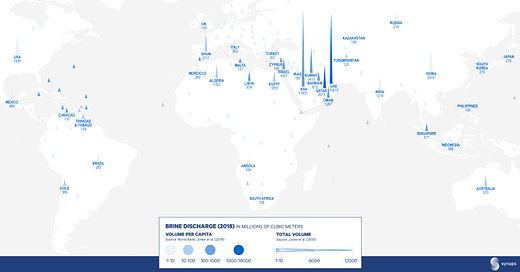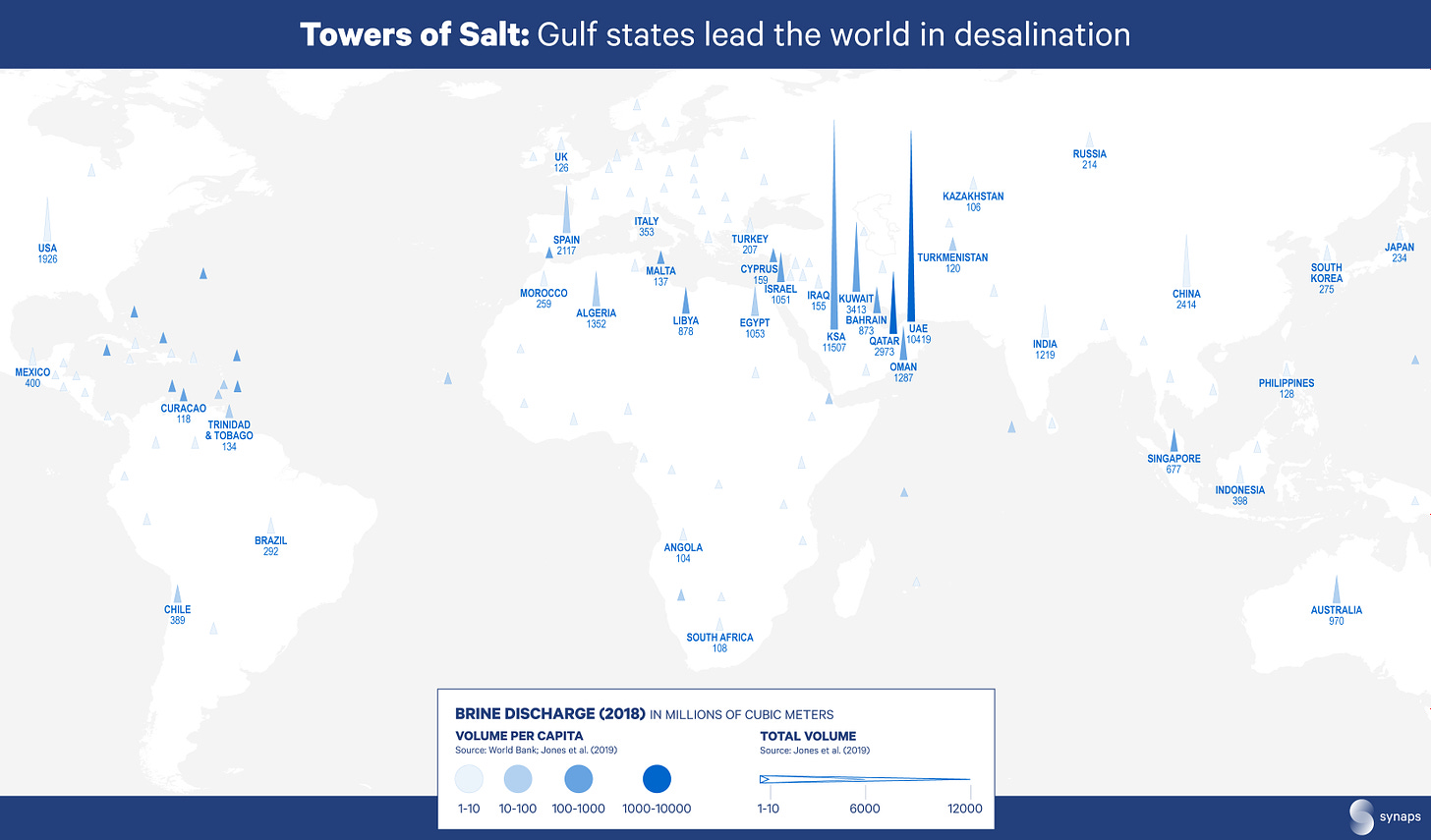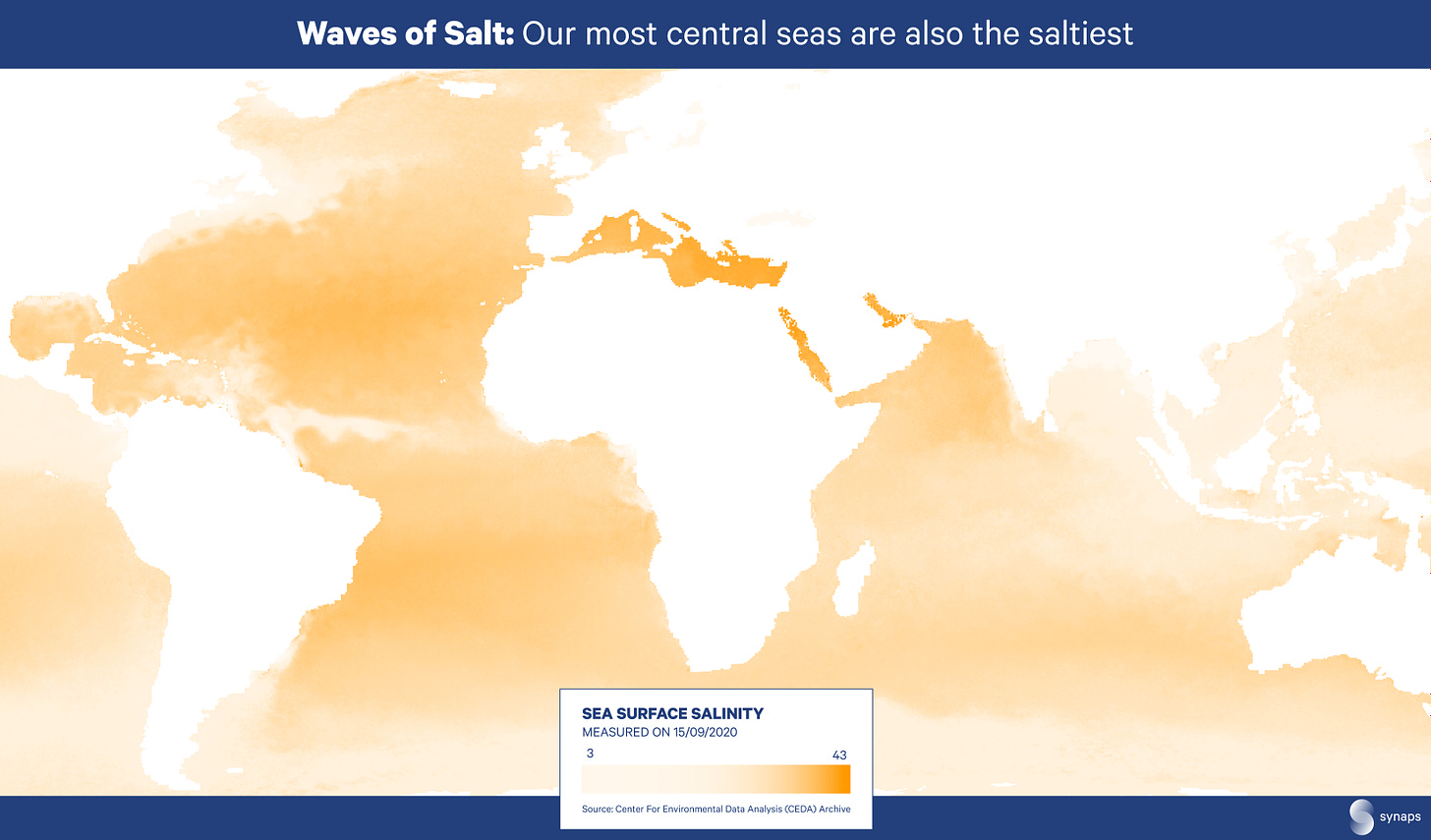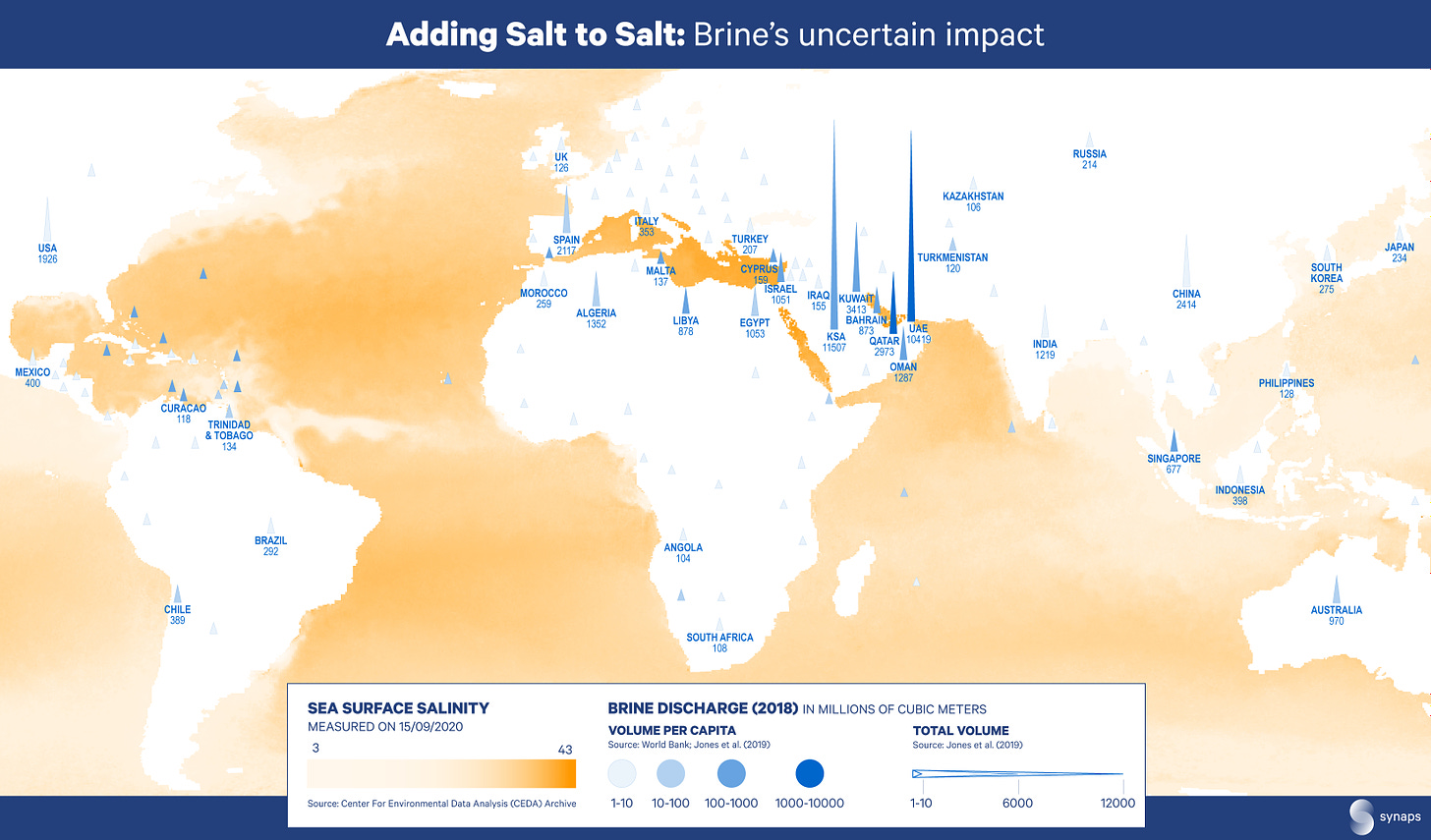The MENA region leads the world in desalination. In 2019, an authoritative study by a team of academics produced eye-popping statistics:
As of 2018, MENA produced an estimated 48% of the world’s desalinated water.
In the same year, it produced 70% of all brine (desalination’s hyper-saline byproduct).
55% of all brine came from just four states: Saudi Arabia, the UAE, Kuwait, and Qatar.
While Gulf countries led the way, other MENA states also ranked high on the list. Of the world’s top 20 brine producers, ten were in the region.
To visualize this trend, Synaps teamed up with Monica Basbous: a brilliant researcher and designer with a gift for turning complex data into beautiful maps.
How did MENA become the desalination capital of the world? And why does it matter?
How it happened is simple enough. The region has precious little freshwater, but abundant fossil fuels to purify seawater. Desert cities like Riyadh, Dubai, and Doha could not have flourished without decades of large-scale desalination.
But growing reliance on this technology also poses risks. These are only getting more urgent, as water-stressed states—from Morocco to Jordan to Yemen—eye desalination as a solution.
Uncharted, salty waters
Some downsides are straightforward. Desalination requires lots of energy, which overwhelmingly comes from fossil fuels. That means high energy bills and planet-warming emissions.
Other risks relate to churning out hot, salty, chemical-laced brine—a waste product that is usually discharged directly into the sea. For now, we don’t know exactly what this will mean. One thing we do know: MENA is already surrounded by the world’s saltiest open bodies of water.
Anyone who swims in the Mediterranean, the Red Sea, or (especially) the Arabian Gulf can tell that they’re saltier than the Atlantic or Pacific. The reasons include narrow connections to the oceans, limited freshwater inflows, and high evaporation. Climate change will further increase their salinity, as key rivers dwindle and rising temperatures speed evaporation.
Adding salt to salt
So, the region with the world’s saltiest seas also leads the world in producing hyper-saline brine. Three more factors make matters saltier still:
The Mediterranean hotspot. It’s not just MENA states pumping brine into the Mediterranean. It’s also southern Europe: In 2018, Spain was the world’s sixth largest producer of brine. Italy, Cyprus, and Malta were also big contributors.
More brine, less water. The same 2019 study found that, on average, MENA states produced roughly two liters of brine for every one liter of desalinated water. That’s a stark contrast to rich nations in East Asia and the West, which typically produce more freshwater than brine. This discrepancy reflects, in part, the fact that Gulf states have until now relied on older, less efficient technology—as discussed in this recent New York Times article.
Coastal facilities. Finally, MENA’s desalination plants are overwhelmingly located along the coasts—raising the stakes for the region’s waters. By contrast, countries like China and the US have significant inland desalination capacity (ie for brackish rivers and aquifers).
The fog of salt
So, what does the relentless accumulation of brine imply for the MENA and its waters? Researchers are still piecing this together. We know that brine could disrupt coastal ecosystems that are fragile, poorly studied, and already exposed to climate change. It could also drive up the costs—and carbon emissions—of desalination itself, because saltier water takes more energy to process.
These problems are made tougher by lack of transparency. MENA states tend to keep data to themselves, especially on sensitive topics like water security. Most lag behind in promoting scientific research. Saudi Arabia, the UAE, and Qatar are working to catch up, but restrictions on speech pose major obstacles to knowledge production and exchange.
Desalination, as a sector, is also opaque. Granular data on the world’s desalination infrastructure is mostly locked away behind steep paywalls. Leading databases cost thousands of dollars to access, and are thus only accessible to large institutions. Others are left to muddle through academic literature and data published by more forthcoming states. (The EU, for example, has published an exportable, georeferenced dataset on European desalination facilities.)
We urgently need more research on desalination’s downsides, and innovation to reduce them. That includes R&D into low-cost, low-carbon technology, and into sustainable options for brine disposal.
In principle, Gulf states could assume a leading role. They have the most at stake, and abundant capital to invest in new approaches. They are also keen to fashion themselves as global leaders in sustainability—a claim which, for now, has little basis in their actual policies. If they are to put their money where their mouth is, they could start by becoming a bonafide open knowledge hub for desalination.







Thanks for this great overview.
If you or others are interested in developing a regional dataset in the future, I can provide data for Algeria. Just get in touch.
Thanks for this thought provoking article on the salinity byprodocts of desalination. It does seem that this is crucial information to be shared and readily available to all who can contribute to understanding these impacts and perhaps to mitigate their impact not only on the countries generating these byproducts but to the global impacts.